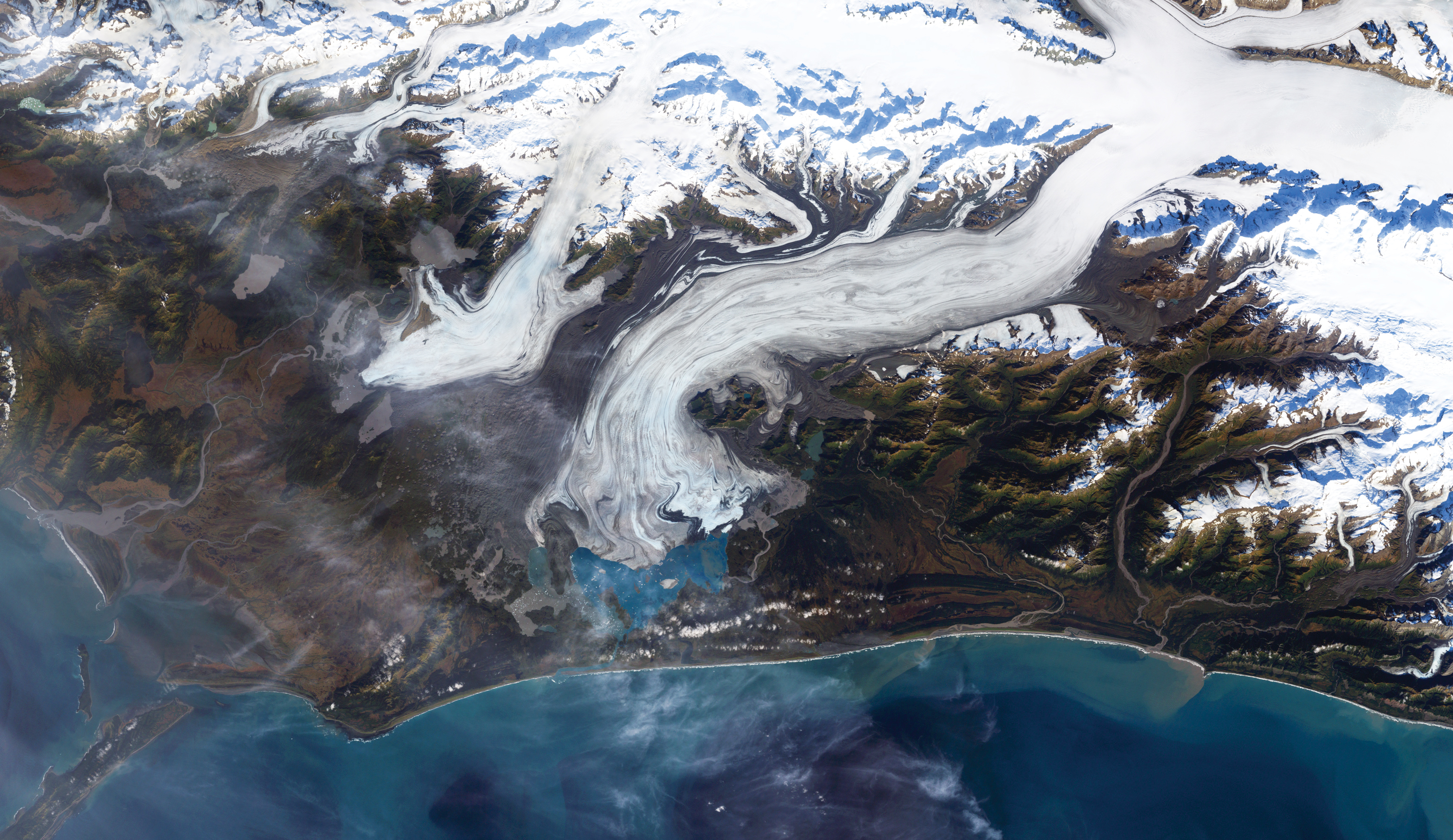U of O geography prof leads the way in research using images from space
While most Canadians are happy to see the ice melting as spring starts, a University of Ottawa researcher is looking for some more ice—by studying earth’s glaciers from space.
Luke Copland, a professor in the Department of Geology at the U of O, and his team of researchers from the university, embarked on a joint project with the Canadian Space Agency (CSA) and Parks Canada to research the ice dynamics of glaciers in the Yukon.
Glaciers are large, constantly moving bodies of ice formed from snowfall accumulating faster than it melts. Scientists around the globe are monitoring glacier patterns to help track climate change but, for these U of O researchers, the glaciers of the Canadian arctic are of particular interest.
“What we wanted to know for the first time is how quickly the glaciers move,” said Copland. “Glaciers are like rivers in a sense, they flow out of the mountains down to lower elevation areas.”
He explained that ice moves as solid water, and the way it moves can depend on factors such as gravity, climate, and temperature. At the same time, glaciers are also melting.
“The speed at which they move tells us about the mass-balance of the glacier. The mass-balance is how much snow accumulates on the glacier each year versus how much melts away.”
According to Copland, the rate at which glaciers melt is important in relation to climate change, because when the glaciers speed up it means that they might be much more affected by climate change.
“Glaciers are like a canary in a coal mine,” said Copland. “They’re an early indicator of climate change. When we look at glacier changes on a global pattern, that gives us an idea what’s happening globally for climate change.”
Copland’s research, entitled Ice dynamics of the Kaskawulsh Glacier, Yukon, studied ice movement and changes using images captured from space. The year-long process involved doing fieldwork, comparing satellite images, and then processing and mapping the data.
According to the CSA, this U of O study provides the first complete view of surface ice velocity across the St. Elias Mountains. This is important because it also shows the effectiveness of observing glacier patterns from space.
Their observations showed that glaciers on the western side of the mountains, which are closer to the ocean, moved more quickly, at a rate of up to 5 km per year. On the eastern side of the mountains, however, the glaciers moved much more slowly at a rate of about 200 m per year due to lower snowfall accumulation.
The group is also doing ongoing research looking at glaciers in other regions of the North.
“In my research group, we’re looking at glacier changes across all of Canada and the Canadian arctic as well,” said Copland. “This project in the Yukon just comprises into that big picture of understanding how and when and why are glaciers changing.”





